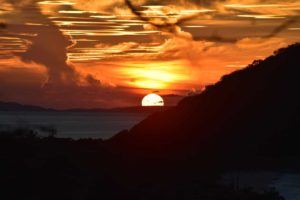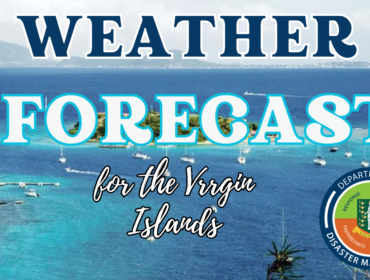Wednesday, February 23rd – Yesterday Virgin Islands’ residents awoke to the horrific accounts of the magnitude 6.3 earthquake and the resulting aftershocks that rocked Christchurch, New Zealand, one of the largest cities in that country, at 12:51pm on Tuesday (local time – Monday, 7:51pm).
The death toll is expected to exceed the official number of 75 lives lost so far. Many people are still trapped beneath the rubble of collapsed buildings and others are still missing. Search & Rescue and First Aid Teams are still working constantly. Hospitals remain operational with specialist medical staff receiving those injured by collapsing buildings and debris. One of the greatest challenges for emergency management teams remains the overloading of telephone networks.
The earthquake cracked roads and broke water mains, flooding several streets. New Zealand residents are being urged to avoid using the water supply. About 80 percent of the city lost power and the airport is closed until further notice. Pictures showed that many streets were crowded with people trying to leave the city. The U.S. Geological Survey reported the earthquake to be part of the “aftershock sequence” of the September 4, 2010 earthquake that was felt in Southern New Zealand. Fortunately, the previous earthquake struck in the predawn hours and, as a result, injuries were at a minimum and there were no deaths reported.
While following the news accounts of the quake, the DDM spoke with their colleagues at Puerto Rico Strong Motion Program who are currently in the Territory undertaking inspections and maintenance of the Virgin Islands Seismic and Strong Motion Sensor Network. Director of the Program, Dr. Jose Martinez, said, “Such an Earthquake CAN occur in this Territory and cause similar damage. The quake was relatively small, but its depth and close proximity to the city caused tremendous damage. This size, however, should not generate a significant tsunami as the magnitude would have to be 6.5 or greater and centred in the ocean.”
Dr. Martinez and his colleague, Engineer Jaffet Pagan, are conducting maintenance on the sensors installed in locations on Anegada, Tortola, Beef Island, Virgin Gorda and Jost Van Dyke. They are also installed in critical facilities such as the Control Tower at Beef Island and the Central Administration Complex on Wickhams Cay. These strong motion sensors are designed to measure the large amplitude, high frequency seismic waves that are typical of large local earthquakes. The waves result in the strong ground motion felt during a large earthquake, which is often to blame for the structural damage similar to that which occurred in New Zealand. The data collected from the sensors is used to improve the design of earthquake resistant buildings and to understand earthquake-induced geologic hazards like liquefaction and landslides.
Deputy Director Mr. Zebalon McLean said, “It is so important that we pay close attention to the events that are unfolding, such as what happened with the New Zealand quake, so that we can document lessons that can be used in our own local preparations.”
Residents in the VI are being constantly reminded that the VI is located in a seismically active area and, as a result, a major earthquake can occur at any time. McLean further said, “The key to surviving earthquakes of the magnitude that occurred in New Zealand is knowing your level of risk, being aware of your surroundings, knowing what to do when you feel an earthquake and practicing the drop, cover and hold on technique.”



